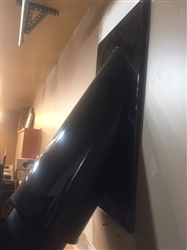Hi, I've been lurking on here for a while, but wanted to get some feedback from the community. We have 40 acres at 9200ft in a remote location in Colorado. Our property is forested with unlimited timber, both live and dead. The wood, unfortunately, isn't of the highest caliber for burning, as it's primarily Subalpine Fir, Engleman Spruce, and Aspen (according to my Forest Service buddy that visited). The yurt has some basic insulation, but is about 450 square feet with a 15ish foot ceiling in the center. I'm planning to put in a wood stove for heat, as it sometimes is into the teens when we've camped there late/early season. With the right setup, I'd like to be able to even spend the night in the winter. Ideally, I'd like to be able to load the stove and make it through the night without having to reload it.
My goal is to avoid loading a stove, making it 90 degrees in the yurt, falling asleep, and waking up 4 hours later and it being 30 degrees inside. Assuming money is no object (within reason), what is your ideal setup, considering the low BTU wood available? I've been going back and forth between getting a decent non catalytic stove like a Drolet or something, or getting a higher end catalytic stove like the smaller Blaze King that I can dampen way down, but not sure if it's worth the money to burn pine and Aspen. Thoughts?
My goal is to avoid loading a stove, making it 90 degrees in the yurt, falling asleep, and waking up 4 hours later and it being 30 degrees inside. Assuming money is no object (within reason), what is your ideal setup, considering the low BTU wood available? I've been going back and forth between getting a decent non catalytic stove like a Drolet or something, or getting a higher end catalytic stove like the smaller Blaze King that I can dampen way down, but not sure if it's worth the money to burn pine and Aspen. Thoughts?


![[Hearth.com] Yurt Stove Recommendations at 9200 ft [Hearth.com] Yurt Stove Recommendations at 9200 ft](https://www.hearth.com/talk/data/attachments/326/326791-4087aa92d6eec40952cc9cda1c863df4.jpg?hash=Y1JAYb0xdQ)
![[Hearth.com] Yurt Stove Recommendations at 9200 ft [Hearth.com] Yurt Stove Recommendations at 9200 ft](https://www.hearth.com/talk/data/attachments/326/326792-2da369b9ddebed56b8b0e16a6087231b.jpg?hash=5_uxHxAi2L)
![[Hearth.com] Yurt Stove Recommendations at 9200 ft [Hearth.com] Yurt Stove Recommendations at 9200 ft](https://www.hearth.com/talk/data/attachments/326/326793-2c45ad273a3a65fcd9adf388e227a089.jpg?hash=DEHPNfpSkr)
